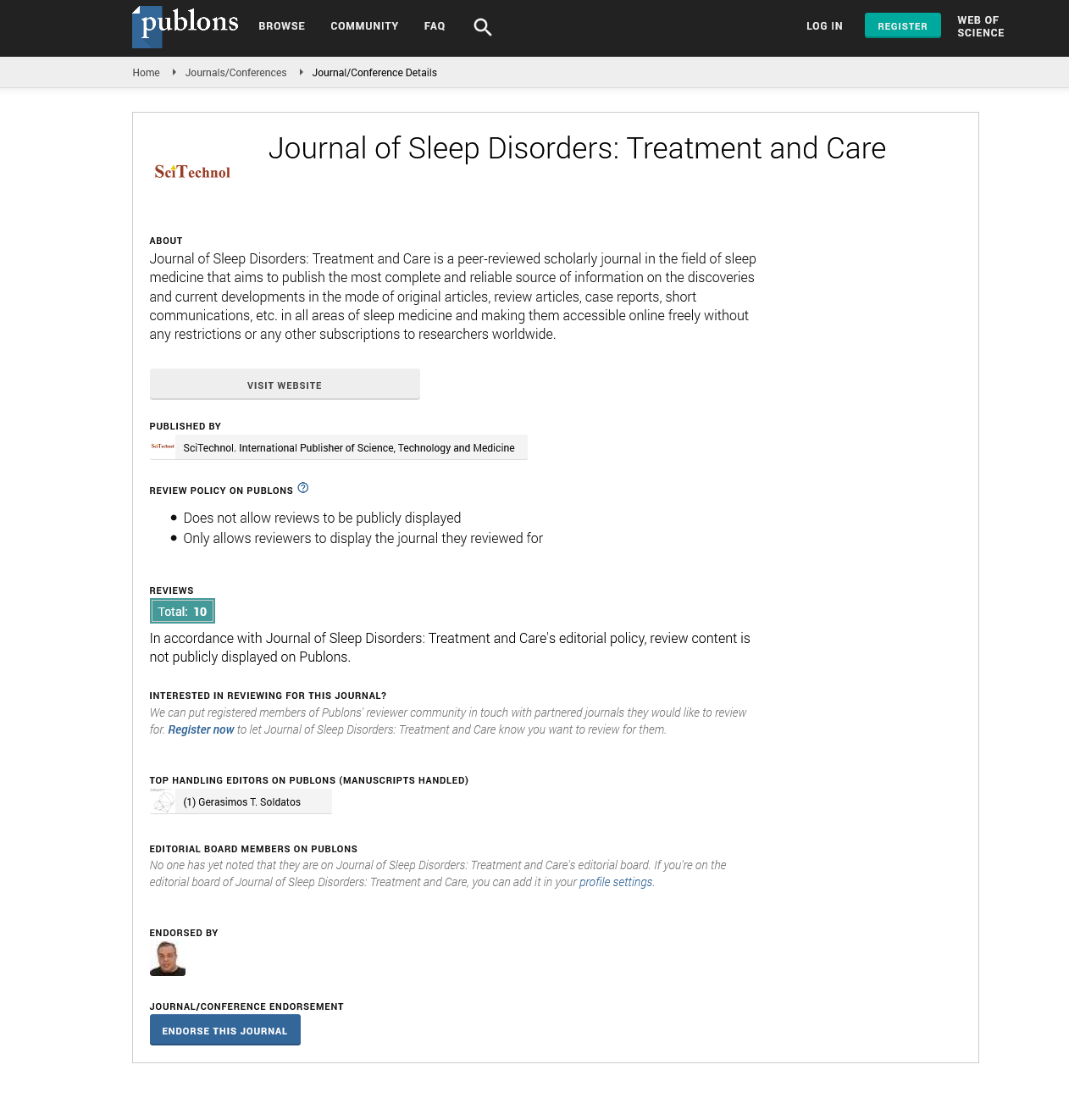Perspective, J Sleep Disor Treat Care Vol: 13 Issue: 2
The Blue Light Effect: Technology Changing Our Sleep Patterns
John Christopher*
1Department of Neurology, The University of Melbourne, Melbourne, Australia
*Corresponding Author: John Christopher,
Department of Neurology, The University
of Melbourne, Melbourne, Australia
E-mail: christoff17@gmail.coom
Received date: 25 November, 2024, Manuscript No. JSDTC-24-155840;
Editor assigned date: 27 November, 2024, PreQC No. JSDTC-24-155840 (PQ);
Reviewed date: 11 December, 2024, QC No. JSDTC-24-155840;
Revised date: 17 December, 2024, Manuscript No. JSDTC-24-155840 (R);
Published date: 24 December, 2024, DOI: 10.4172/2325-9639.1000174.
Citation: Christopher J (2024) The Blue Light Effect: Technology Changing Our Sleep Patterns. J Sleep Disor Treat Care 13:2.
Abstract
Description
In today’s digital age, technology is deeply ingrained in our daily lives, influencing almost every aspect of how we live, work and interact. However, one significant but often overlooked consequence of our increasing reliance on technology is its impact on our sleep patterns. At the heart of this disruption is blue light emitted by smartphones, tablets, computers and other digital screens which has been shown to interfere with our natural sleep-wake cycle, or circadian rhythm. Exposure to blue light at night can disrupt your circadian rhythm. The circadian rhythm is a natural process that is part of the body’s internal clock.
The circadian rhythm is the cycle of physical, mental and behavior changes that the body goes through every 24 hours. Blue light is a high-energy visible light with a wavelength of about 450 nm to 495 nm. Unlike other types of light, blue light has a unique ability to penetrate deep into the eye, reaching the retina and influencing the brain. This light exposure, particularly at night, can have a serious effect on our sleep patterns, largely because it suppresses the production of melatonin, a hormone that regulates sleep. In sleep studies, there are some reports on the discrepancy between the results of objective and subjective indicators.
Melatonin is naturally produced by the pineal gland in response to darkness and plays a major role in signaling to the body that it is time to sleep. When melatonin levels rise, the body begins to feel sleepy and our internal clock is aligned with the natural day-night cycle. However, exposure to blue light in the evening, particularly from digital devices, disrupts this process. The blue light signals to the brain that it is still daytime, inhibiting melatonin production and making it harder for individuals to fall asleep at their usual bedtime. This disruption can lead to delayed sleep onset, shorter sleep duration and poorer sleep quality.
The consequences of this interference with the natural sleep cycle are far-reaching. One of the most significant effects of disrupted sleep patterns is the negative impact on cognitive performance. Sleep is essential for consolidating memories, enhancing learning and improving concentration. When sleep is reduced or disrupted, it becomes more difficult to focus, make decisions and retain information. This is particularly concerning for individuals who rely on mental acuity, such as students, professionals and anyone in demanding cognitive roles. Additionally, individuals can try using blue light-blocking glasses, which have lenses that filter out harmful wavelengths of blue light.
Additionally, chronic blue light exposure at night can have longterm health implications. Persistent sleep deprivation and poor sleep quality are linked to a variety of health issues, including increased stress levels, weakened immune function, mood disturbances and even a higher risk of developing conditions such as obesity, diabetes and heart disease. The body’s inability to rest and recover fully due to irregular sleep patterns can create a cycle of health problems that are difficult to break. Blue light exposure near bedtime can have a disruptive effect on sleep. This can lead to poor sleep and drowsiness during the day.
In conclusion, the blue light emitted by digital devices is a significant factor in disrupting our sleep patterns and altering the natural rhythm of our bodies. Its effect on melatonin production makes it harder for people to fall asleep, leading to reduced sleep quality and a range of potential health issues. By being mindful of screen time before bed and utilizing available technology to minimize blue light exposure, individuals can protect their sleep and maintain better overall health in an increasingly connected world.
 Spanish
Spanish  Chinese
Chinese  Russian
Russian  German
German  French
French  Japanese
Japanese  Portuguese
Portuguese  Hindi
Hindi 
